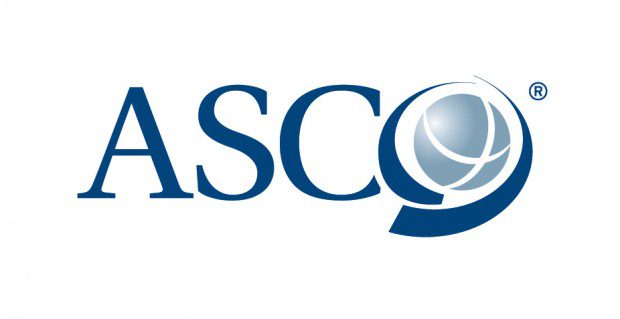ASCO features many updates on GIST trials. Promising results for the immunotherapy approach to treating cancer dominated the annual conference of the ASCO and represent one of the biggest developments in cancer research since the advent of Gleevec.
But there was also plenty of information about GIST. Here’s a review of several of the posters relevant to GIST patients:
George Demetri (Dana-Farber) and Nikolas von Bubnoff (Freiburg University Hospital, Germany) presented extremely interesting data on the ability to detect DNA from tumors in the blood of GIST patients. Using different technology, the groups led by these two researchers showed that a recurrence of GIST is correlated with mutant free circulating tumor DNA (fc)DNA and that secondary mutations can be detected in fcDNA.
This technology could have important implications in two areas for GIST patients.
1. Rising mutant fcDNA levels could predict a recurrence earlier than a CT scan. This could allow adjuvant patients to resume Gleevec at the earliest time point of a recurrence, potentially before a tumor could grow large enough to be seen on a CT scan. Adjuvant treatment studies suggest that treating GIST as early as possible may be more effective than waiting to a later time point (this is still a debatable point). Using this technology might allow a patient to “cycle” on or off Gleevec as needed according to rising or negative fcDNA levels. If proven effective enough, this technology might even be able to reduce the scan frequency of patients (reducing radiation and contrast-related negative effects on the kidney).
2. fcDNA appears to be superior to traditional biopsies at detecting secondary mutations that cause resistance to Gleevec. Up until now, treatment decisions cannot be based on secondary mutations because a biopsy may only detect one or two secondary mutations when 10 or more could exist in a resistant patient. This technology gives a much more complete picture of secondary mutations. This could eventually allow treatment to be custom tailored to each patient based on the actual secondary mutations present.
Read more about George Demetri’s work on circulating tumor DNA using BEAMing technology here
Dr. von Bubnoff’s poster described preliminary results of a phase IIIb clinical trial (NCT01462994). Von Bubnoff’s team collected 291 plasma samples from 38 GIST patients with known mutations in KIT or PDGFRA. In contrast to the BEAMing technology used by Dr. Demetri’s team, von Bubnoff used a different method, allele-specific ligation PCR to detect fcDNA.
Patients with active GIST disease had significantly higher amounts of mutant fcDNA compared to patients with no evidence of disease and the amount of mutant fcDNA correlated with disease course. A positive test result or an increase in mutant fcDNA was seen in 5 patients with progressive disease or relapse. In contrast, a decline of tumor fcDNA was seen in 5 patients responding to treatment. Von Bubnoff’s conclusions were: “Our results indicate that free circulating DNA harbouring tumor specific mutations in the plasma of patients with GIST can be used as tumor-specific biomarker. The detection of resistance mutations in plasma samples might allow earlier treatment changes and obviates the need for repeated tumor biopsies.”
Read the von Bubnoff abstract here
The poster, presented by LRG Research Team Member, Michael Heinrich, presented in-vitro test data on ponatinib. Ponatinib is approved for use in patients with resistant forms of chronic myelogenous leukemia (CML). In CML, it is considered a third generation tyrosine kinase inhibitor (TKI). Lab date suggests that it is a very potent KIT inhibitor with widespread activity against secondary mutations, especially those involving the activation loop (exon 17 in KIT). Activation loop mutations remain difficult to treat, although regorafenib (Stivarga) has activity against many of these mutations. The authors concluded: “PO (ponatinib) potently inhibits the majority of clinically relevant KIT mutant kinases and has a broader spectrum of activity compared to IM (imatinib), SU (sunitinib), or RE (regorafenib). Based on these data, a phase 2 study of PO in drug-resistant GIST is being initiated.” Secondary mutations are the most common cause of resistance for GIST patients with KIT or PDGFRA mutations.
The phase II trial will be starting for GIST patients in early June. The trial will initially open at the Knight Cancer Center in Portland, Oregon (Dr. Michael Heinrich) with additional sites opening later at Fox Chase Cancer Center (Dr. Margaret von Mehren) and Dana-Farber Cancer Institute (Dr. George Demetri). This trial is not yet listed on clinicaltrials.gov or the LRG clinical trials database.
This study, by Dr. Myles Smith, used data from the SEER database to examine the question of whether or not GIST patients were at higher risk of developing a second different cancer in addition to GIST.
Conclusions: Patients with a diagnosis of GIST have a higher incidence of second cancers when compared with standardized incidence in the general population. High-grade GISTs were associated with an additional malignancy. Both sexes were observed to have increased incidence of kidney cancer, with females at an increased risk of developing colon cancer.
As part of GIST surveillance, screening for colon cancer in females and kidney cancer in both sexes may be considered imatinib concentrations in patients in the five-year adjuvant imatinib PERSIST-5 trial. Plasma samples were collected at 1, 4, 12 and 24 months. In this study (in contrast to other studies), imatinib plasma levels remained relatively steady over time.
Inter-patient variability was 40.7-78.4 percent. Most notably, mean imatinib trough concentrations were on average ~33 percent higher in females vs males. The authors note that, “The 33% higher mean trough levels in females warrants further study for clinical decision making”.
Two studies associated with neurofibromatosis were presented by Toshirou Nishida, MD, PhD, FACS.
In study # 1, the authors screened 95 adults with NF1. Six of these patients were found to also have GISTs in the small intestine with no KIT or PDGFRA mutation.
In study # 2, the authors looked at 1,184 sporadic GISTs from community hospitals in Japan and found 24 primary NF-1 GISTs. They concluded that NF-1-associated GIST is a rare entity of GIST and has distinctive features from conventional sporadic GISTs. KIT targeted TKIs appeared to be ineffective for recurrent and advanced NF1-GISTs.
Dr. Venkata R. Bulusu, MD, MSc, MRCP, FRCR presented data from the Cambridge GIST Study Group, United Kingdom.
The Cambridge GIST study group was formed in 2003. Results from 10 years of following patients (260 patients) were presented. GIST was initially suspected in 41 cases that turned out to be something besides GIST. Miettinen risk groups were:
High risk = 27%
Intermediate risk = 16%
EGIST = 4%
Low and very low risk GISTs = 57%
Conclusions: This is the first prospective regional GIST registry data from the UK. GISTs should be managed by an experienced multidisciplinary specialist team to provide a high quality patient centered service.
In a small study by Akira Sawakim M.D., Ph.D., seven Japanese patients with greater than five year’s response to imatinib all had an imatinib concentration greater than 789 ng/mL. The authors also noted that small patients with a BSA <1.56, may be recommended for a lower dose of imatinib (300 mg).
Care should be used in interpreting this study due to the small size.
Data from 305 GIST patients from four trials were analyzed by Djoeke De Wit, et al to look at the influence of gostrointestinal resection on sunitinib exposure. Patients were divided into six groups according to previous GI surgery. Patients from the fourth group; with a combination of gastrectomy and small bowel resection had significantly lower sunitinib and sunitinib metabolite (SU12662) concentrations than the other five groups (one group was a control group). Concentrations were reduced by 21 percent (sunitinib) and 28 percent (SU12662) in the fourth group. Contrary to previous reports with imatinib, gastrectomy alone does not appear to influence sunitinib exposure. According to the authors, “This should be taken into consideration for the treatment of GIST patients who had a gastrectomy. In theory, such patients might have better outcomes if treated with sunitinib, given the risk of subtherapeutic exposure to imatinib.”
Abstracts
To view all of the abstracts click here and search GIST





